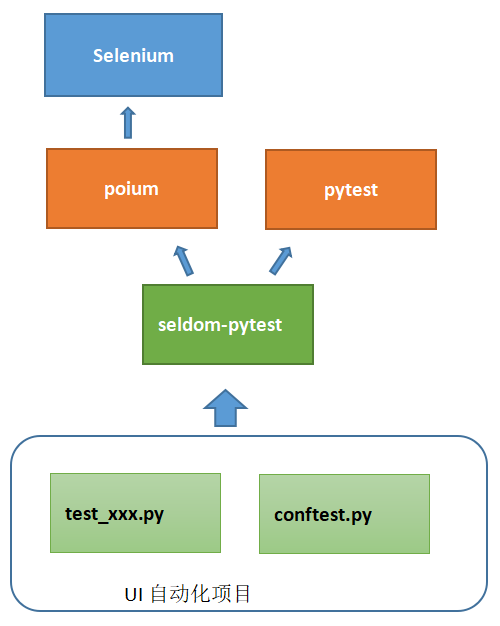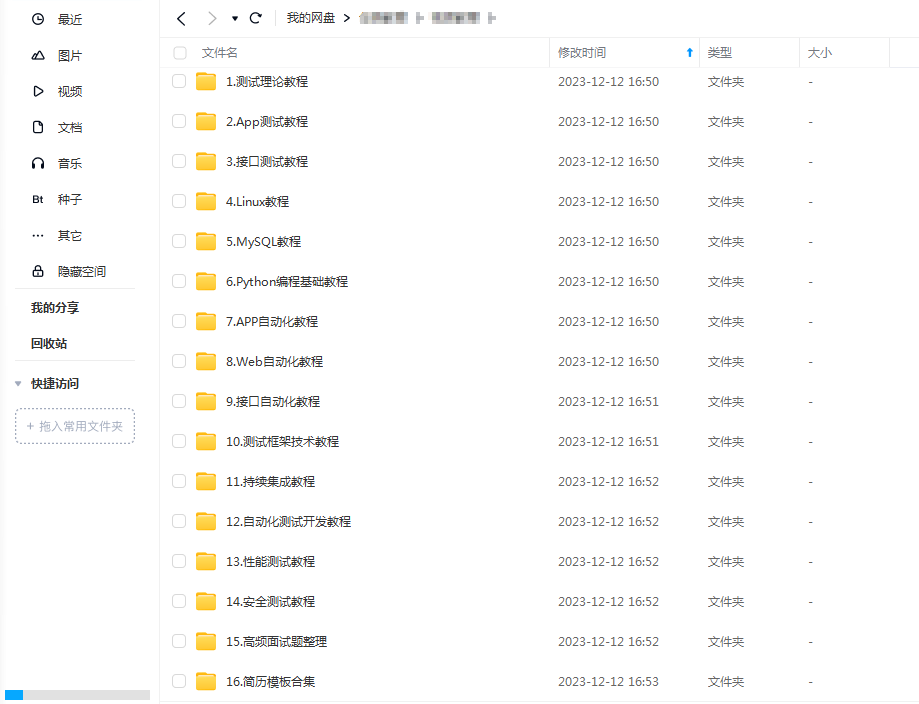当pytest遇上poium会擦出什么火花
首先,创建一个test_sample/test_demo.py 文件,写入下面三行代码。
def test_bing(page):page.get("https://www.bing.com")assert page.get_title == "必应"
不要问题 page 从哪里来,打开终端进入test_sample/目录,执行pytest 命令。
❯ pytest
================================================= test session starts =================================================
platform win32 -- Python 3.8.6, pytest-6.2.4, py-1.10.0, pluggy-0.13.1
benchmark: 3.2.3 (defaults: timer=time.perf_counter disable_gc=False min_rounds=5 min_time=0.000005 max_time=1.0 calibration_precision=10 warmup=False warmup_iterations=100000)
rootdir: D:\github\test-circle\seldom\test_sample
plugins: allure-pytest-2.8.40, base-url-1.4.2, benchmark-3.2.3, html-3.1.1, metadata-1.11.0, rerunfailures-9.1.1, seldom-0.0.3
collected 1 itemtest_case.py
DevTools listening on ws://127.0.0.1:63137/devtools/browser/32d7e69d-69b5-4e0c-b0df-0e1d1d37af46
. [100%]================================================== 1 passed in 4.75s ==================================================
是不是觉得做UI自动化超级简单,并好奇是怎么做到的,别急,我画个图帮你理解。

说明
- poium: poium集成了selnium/appium并提供一套UI自动化测试的API。
- pytest: 强大的自动化测试框架,背后有一个丰富的生态,使用pytest就可以使用他背后的各种插件。
- seldom-pytest: 这是我开发的粘合剂,将poium和 pytest,以及pytest背后的插件粘合到一起。
- UI 自动化项目: 站在seldom-pytest的基础上编写你的UI自动化项目。
seldom-pytest设计思想
如上图所示,在seldom-pytest中,核心只需要编写两类文件。
-
conftest.py: 这是pytest的配置文件,功能非常强大,你可以在里面写各种钩子函数。如前面的例子,
page就是一个钩子函数。 -
test_xxx.py: 这是你的用例文件,你只需要引用各种钩子函数来完成用例即可。
seldom-pytest 实战
其实,seldom-pytest 并没有做什么事情,几乎也没有提供API,更多是的提倡一个设计思想。我们来举个例子说明哈。
- 创建一个
test_sample/conftest.py文件。
import pytest
from poium import Page, Elementclass BaiduPage(Page):search_input = Element(id_="kw", describe="搜索框")search_button = Element(id_="su", describe="搜索按钮")settings = Element(css="#s-usersetting-top", describe="设置")search_setting = Element(css="#s-user-setting-menu > div > a.setpref", describe="搜索设置")save_setting = Element(link_text="保存设置", describe="保存设置")@pytest.fixture(scope="module", autouse=True)
def baidu_page(page):return BaiduPage(page)-
BaiduPage类主要通过poium封装元素定位。 -
baidu_page将BaiduPage类封装为一个钩子函数。
- 修改一个
test_sample/test_demo.py文件,代码如下:
def test_baidu_search(baidu_page, base_url):"""搜索"""baidu_page.get(base_url)baidu_page.search_input.send_keys("pytest")baidu_page.search_button.click()baidu_page.sleep(2)assert baidu_page.get_title == "pytest_百度搜索"test_demo.py文件不需要导入任何模块。可以直接调用钩子函数baidu_page 、base_url 实现自动化测试用例。
- 如何运行用例,交给
pytest即可。
# 运行测试 (默认chrome)
> pytest# 指定不同的浏览器 (chrome/gc, firefox/ff, safari)
> pytest --browser chrome
> pytest --browser firefox
> pytest --browser safari# 指定base-url
> pytest --base-url https://www.baidu.com# 生成测试报告
> pytest --html ./report.html
当然,你也可以创建一个run.py文件来使用pytest。
import pytestpytest.main(["--browser=firefox","--html=./report.html","--base-url=https://www.baidu.com"
])
只需要运行该文件即可。
> python run.py
关于conftest文件
-
conftest.py用来实现钩子函数的,我把xxPage类定义在里面有点奇怪,当然,你也可以单独封装一层,只在conftest.py实现xx_page钩子函数即可。 -
一个项目中每个目录下都可以有一个
conftest.py文件。每个conftest.py文件作用于当前目录以及子目录。我们可以充分利用这个特点。
test_sample/
├── test_aa/
│ ├── conftest.py
│ ├── test_aa.py
├── test_bb/
│ ├── conftest.py
│ └── test_bb.py
└── test_cc/
│ ├── conftest.py
│ └── test_cc.py
├── conftest.py
├── pytest.ini
└── run.py
如果定义的
xxPage类会被所有测试用例用到,那么就放到根目录;如果只会被某个测试用例用到,那么就放到和他平级的目录。
最后感谢每一个认真阅读我文章的人,礼尚往来总是要有的,这些资料,对于【软件测试】的朋友来说应该是最全面最完整的备战仓库,虽然不是什么很值钱的东西,如果你用得到的话可以直接拿走:
这些资料,对于【软件测试】的朋友来说应该是最全面最完整的备战仓库,这个仓库也陪伴上万个测试工程师们走过最艰难的路程,希望也能帮助到你!




)




---- flask初始及创建登录页面)


)







: HTML解释器和DOM 模型)
第2版 例4-5 select)